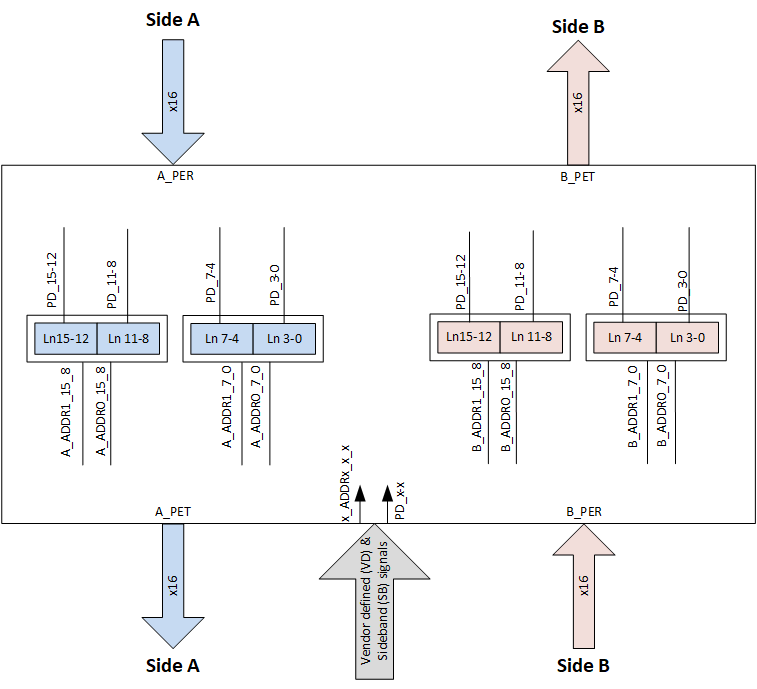JAJSPT0 February 2023 DS160PR1601
PRODUCTION DATA
- 1 特長
- 2 アプリケーション
- 3 概要
- 4 Revision History
- 5 Pin Configuration and Functions
- 6 Specifications
- 7 Detailed Description
- 8 Application and Implementation
- 9 Device and Documentation Support
- 10Mechanical, Packaging, and Orderable Information
7.3.1 Pin Configurations for Lanes
The DS160PR1601 has 16 data lanes with 16-Tx channels and 16-Rx channels. The data channels are grouped for I2C configurations and PCIe state machine grouping as shown in #FIG_G1Z_YVZ_CPB using xADDRx and PDx pins. Table 7-1 defines the channel grouping.
 Figure 7-1 Pin Configurations for
Lanes
Figure 7-1 Pin Configurations for
Lanes| Pin Name | Description |
|---|---|
|
PD_15-12 PD_11-8 PD_7-4 PD_3-0 |
Active in all device control modes. The pin has internal 1-MΩ weak pulldown resistor. The pin triggers PCIe RX detect state machine when toggled.
Each PD pin sets control for a bank of 8 lanes (4 from Side A and 4 from Side B) to provide flexibility for x4 and x8 bifurcation:
PCIe hot plug insertion implementation varies from system to system. One way to implement will be to use CEM interface PRSNT# signal. For PCIe x16 application all four PD signals can be shorted together and connect to CEM interface PRSNT# signal. |
|
A_ADDR1_15-8 A_ADDR0_15-8 A_ADDR1_7-0 A_ADDR0_7-0 B_ADDR1_15-8 B_ADDR0_15-8 B_ADDR1_7-0 B_ADDR0_7-0 |
5-level input pins as implemented by pull-down resistor on the pin according to Table 7-5. These pins are sampled at device power-up only. Sets SMBus / I2C secondary address according to Table 7-3. Each set of ADDR1 and ADDR0 pins defines the addresses for bank of 8 lanes:
#FIG_G1Z_YVZ_CPB shows how I2C secondary addresses are accessed for specific lanes. |